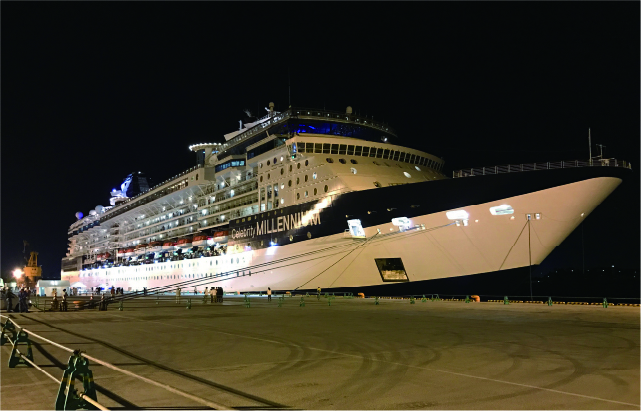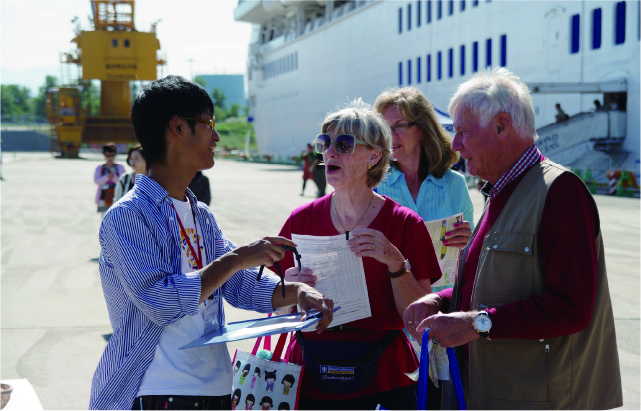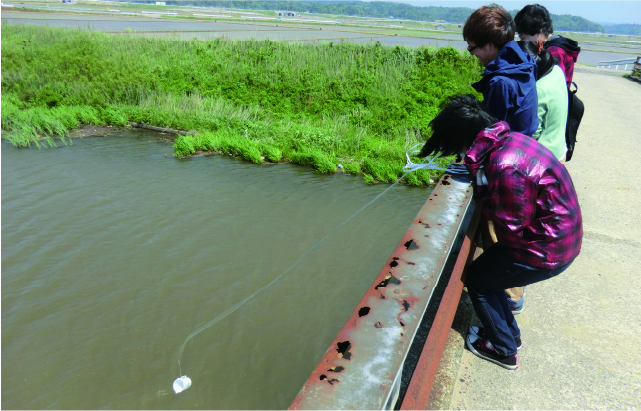-
Atmosphere & Weather
-
Volcanoes & Earthquakes
-
History of Life and Earth
-
Soil Engineering
-
Concrete
-
Civil Engineering Structures
-
Rivers and Coasts
-
Disaster Prevention
-
Water Cycle
-
Transportation
-
Urban Architectural Design
-
Eco-Harmonized Society
-
Atmosphere & Weather
Do you know what an aerosol is? Aerosols are tiny particles in the air. They can be sand grains, soot, sea salt, etc., and come from many places on earth. Since they are related to weather, health hazards, global warming, etc., it is very important to properly understand “aerosols,” including their origin, behavior in nature, and transportation routes in the atmosphere.
Close -
Volcanoes & Earthquakes
Living in Japan means living with volcanoes and earthquakes. Volcanoes and earthquakes can be scary, but they also have many good things to offer, such as producing hot springs and resources, and teaching us about the history of the earth. In order to use volcanoes and earthquakes and to protect ourselves from their disasters, we need to have a proper understanding of volcanoes and earthquakes. Research on volcanoes and earthquakes give us some important opportunities to understand the land we live on and to think about how our cities and society should respond accordingly.
Close -
History of Life and Earth
Where did we come from and where are we going? As a planet teeming with life, Earth has maintained its life environment, which is the most distinctive feature that distinguishes it from other planets in our solar system. It has not just been maintained; the Earth, and life, has been constantly changing. By exploring the strata and fossils, we can capture global environmental changes, the evolution of life, and the relationship between life and the Earth. By doing so, we can see humanity’s place in the ever-changing Earth and ecosystem. From there, our mission is to present a new view of nature and the Earth in response to the era of change.
Close -
Soil Engineering
Civil engineering structures such as bridges, dams, roads and railroads are indispensable to our daily lives. All of these structures are built on the ground. To create safer and more disaster-resistant structures, it is necessary to understand the “ground” that supports them. We are conducting a wide range of research, including investigation technology to understand the geology, simulation technology to predict the behavior, technology to strengthen the ground, and technology to utilize geothermal energy.
Close -
Concrete
Concrete is a construction material that has been used since the time of ancient Rome. Although it is a material with a very long history, it continues to evolve every day through the application of the latest science and technology. We conduct research on a very wide range of scales, from chemical reactions in cement and research focusing on microstructure using microscopes to the development of ultra-high-strength concrete using large experimental machines that can withstand 100 tons of pressure. Whether you like the details or want to do something big, we’re sure to satisfy you!
Close -
Civil Engineering Structures
Why don’t towers of a few hundred meters or bridges of a few kilometers break? Will it continue to be used for many years to come? Civil engineering structures are designed by considering where and how much force will be applied. In our country, where many structures are decades old after construction, it is important to calculate the risk of old structures, real-time monitoring, and reinforcement methods. Not only to build, but also to maintain. A new world of civil engineering is about to begin.
Close -
Rivers and Coasts
The flow of water from the mountains to the sea carries sediment along the way, changing the appearance of rivers and beaches. Waves and ocean currents also change the bottom topography and coasts. Heavy rains and typhoons can dynamically change river and coastal landforms in a matter of days, or over tens of thousands of years due to crustal deformation over a wide range of time scales. We clarify the landforms created by water and the mechanisms of their formation, and evaluate their impact on the structures that protect rivers and coasts to create rich waterfront areas.
Close -
Disaster Prevention
Disasters that cause much damage, such as floods, storm surges, earthquakes, and tsunamis, are part of our lives. While it is impossible to eliminate disasters themselves, it is possible to reduce damage through the creation of hazard maps and disaster-resistant structures. In addition to understanding disasters themselves, we can also promote the creation of a disaster-resilient society by researching and studying how disasters cause damage, and then simulating the damage based on the data we have obtained.
Close -
Water Cycle
Water is what circulates the various substances on the earth, and our abundant life is also supported by water. If the environment surrounding water changes, the movement of substances carried by water will be affected, and in some cases, this could lead to disasters and diseases. Data on the water environment, obtained using a variety of methods ranging from global-scale simulations to genetic analysis, can be used to understand climate, design water supply and sewage systems, and assess health risks.
Close -
Transportation
We usually travel by foot, car, or train without thinking. These are made safer and less wasteful by mechanisms that are invisible to our eyes. For example, transportation agencies coordinate with each other, design travel routes, and maintain routes in the event of a disaster. These mechanisms continue to change diversely with new technologies and times. In the future, transportation between space and earth may even become routine!
Close -
Urban Architectural Design
Do you know the problems of the city you are living in? For example, Japan’s population is now declining. The city that has expanded to become too large will become too inconvenient as the number of people decreases. There are many other unseen challenges facing cities, regions, and buildings, such as smart development, decarbonization, disaster prevention, and aging infrastructure. We will find and solve various issues while incorporating advanced technologies. Such knowledge and skills are now in demand.
Close -
Eco-Harmonized Society
The 21st century has been called the “Century of the Environment. In order for society to change from a consumption-oriented to an environmentally conscious society, it is necessary to create new knowledge and technologies in various fields, and to spread these technologies into our daily lives. In order to realize a society in harmony with the environment, research is being conducted day and night on structures and mechanisms to protect the environment and society.
Close
Features of the School
Our school aims to understand Planet Earth and its environment, and to develop the state-of-the-art technologies needed to build the foundations of our society. It offers three courses: Earth and Planetary Science, Civil Engineering and Disaster Prevention, and Environmental and Urban Engineering. Our goal is to produce graduates who can contribute to society with their expertise.
Introduction
Outline
Our school provides education and conducts research in both science and engineering; the disciplines offered are Earth and Planetary Science, and Civil and Urban engineering. Our curriculum covers the 4.6-billion-year history of the Earth and life, our environment, natural disasters, and the infrastructures that form the basis of our daily lives.
Our Principles and Goals
Our newly established school offers science and engineering disciplines. We aim to understand Planet Earth and its environment and to build the foundations necessary for a livable environment and cities. Our school offers three integrated courses: Earth and Planetary Science, Civil Engineering and Disaster Prevention, and Environmental and Urban Engineering. We train our students to become researchers who will study the Earth and its environment, engineers who will solve problems by applying the new ideas and techniques, and educators who will teach the findings to their students.
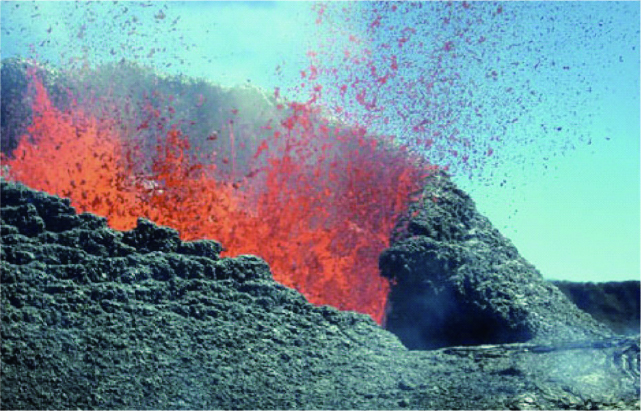
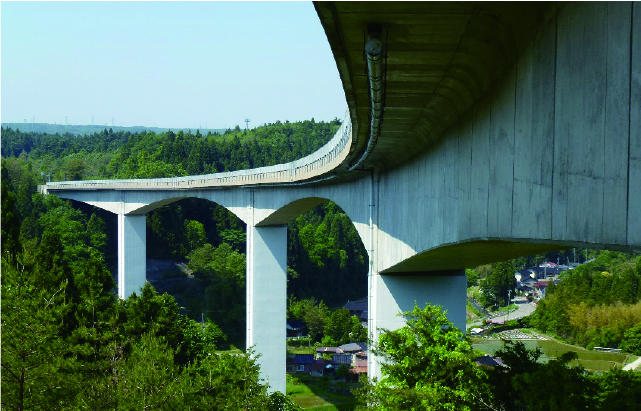
Course in Earth and Planetary Science
Earth, our living planet: life and evolution through the ages? from past to present and into the future
We provide education and conduct research in Earth and Planetary Science, covering a wide variety of fields including the materials that make up the Earth and other planets, the environment, the history of life forms, and the dynamics of the Earth’s interior and surface. Our course offers lectures on the basics necessary to understand the Earth, laboratory work to learn cutting-edge analytical methods, and fieldwork to acquire the necessary skills and experience. Our goal is to educate and train students to become researchers and engineers who will contribute to solving a broad range of global and local problems, or to become science teachers.
If the Earth’s history were compressed into one year, humans would appear on December 31. How did the earth prepare the stage for humans? If we imagine the Earth to be an egg, the Earth’s crust is only as thick as an eggshell. No one has seen the world under the shell of the Earth or other planets. The Earth is filled with poorly understood frontiers. That is the starting point for our exploration of the Earth.
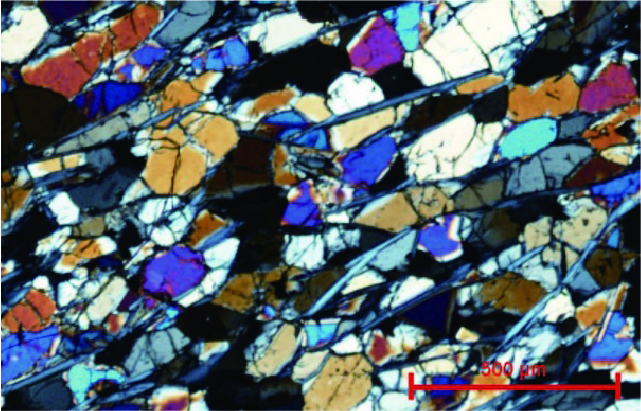

Course in Civil Engineering and Disaster Prevention
We aim to construct safe, comfortable and resilient infrastructures, based on theories, experiments and on-site training.
We are now facing the major challenge of building a nation that is harmonized with the natural environment yet resistant to disasters. Our school aims to produce engineers who will take on this challenge from the perspectives of design, construction and maintenance of infrastructure, and environmental preservation. Engineering is a field of manufacturing products; however, our goal is not to produce a large amount of cheap products, but rather to accomplish projects of large-scale infrastructure such as roads, bridges, tunnels and harbors, which should be tailored to regional conditions. Infrastructures produced through the ingenuity of “professional engineers” with advanced technologies will be handed down to subsequent generations as legacies. After completing this course, students will work as leading engineers on large-scale projects at various sites around the world; this will be the beginning of new legacies.
“They are not ordinary products; they are projects that will become legacies over time.”

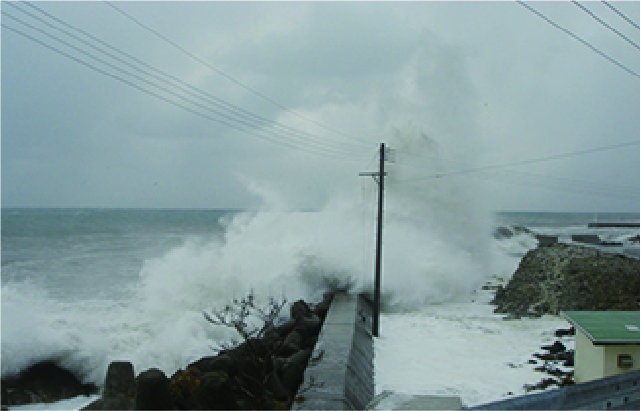
Course in Environmental and Urban Engineering
We solve various problems in city planning from the perspectives of transportation and the environment through a combination of arts and sciences.
“What is a city? It is not merely a place where people get together to live. It is a complex that contains many facilities for the convenience of residents and visitors, as well as transportation that allows for their free movement. Who planned and created them? When we live together, we may encounter serious problems such as conflicts of interest and environmental pollution; however, we go about our lives without being aware of those problems. Who is solving the problems and supporting our life?
The keywords of this course are “coexistence with the environment” and “the present as a page of history”. Students will learn about the creation and development of cities from a multi-faceted, interdisciplinary perspective. We produce “human-friendly, environment-friendly engineers” who examine the safety and convenience of life in a comfortable environment from an engineering viewpoint. Moreover, they consider the standpoint of the users when carrying out civil engineering projects. “Rome was not built in a day. Then, in how many days was my hometown built? What will it be like in the future?” You will find the answers to these questions at our school.
